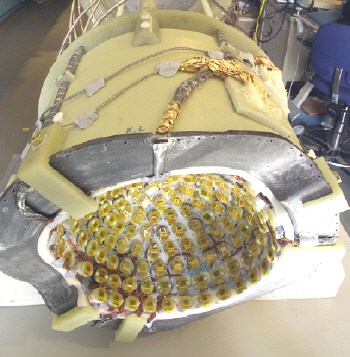Magnetic measurements of brain activity could be free from noise in the future thanks to a new helmet-like device developed by medical physicists at the Los Alamos National Laboratory in the US. Magnetoencephalography (MEG) is the only technique that can directly measure neuronal activity in the brain, but it is plagued by background noise that interferes with signals from the brain itself. The new helmet could provide much more accurate information on brain function (P Volegov et al. 2004 Phys. Med. Biol. 49 2117).

MEG is a non-invasive technique that provides detailed information on the brain in almost real time by using superconducting quantum interference device (SQUID) sensors to measure the magnetic fields generated by currents flowing in and around neurons. However, these magnetic field signals are extremely weak — typically between about 10-14 and 10-13 Tesla — and are therefore easily overwhelmed by background magnetic noise. Although various techniques exist to reduce this noise, none are entirely satisfactory because they can also reduce the size of the signals produced by the brain itself.
The helmet designed by the Los Alamos team is made from a layer of superconducting lead and is placed around the SQUID sensors (see figure). The helmet needs to kept at temperatures below 8 kelvin — in a liquid helium cryostat — for the lead to be superconducting. The device works on the principle that Meissner currents flow on the surface of the superconductors in the helmet. These currents expel magnetic flux, therefore preventing any external magnetic fields from penetrating the helmet. Moreover, unlike previous methods, the helmet can be placed close to the head without affecting signals produced by the brain.
The scientists have already tested their helmet on real patients and say that background noise signals can be reduced by more than six orders of magnitude, making it the most effective system to date. However, the device still needs to be improved because noise levels are still relatively high around the brim.



